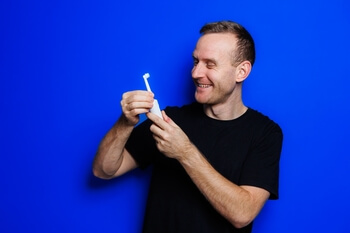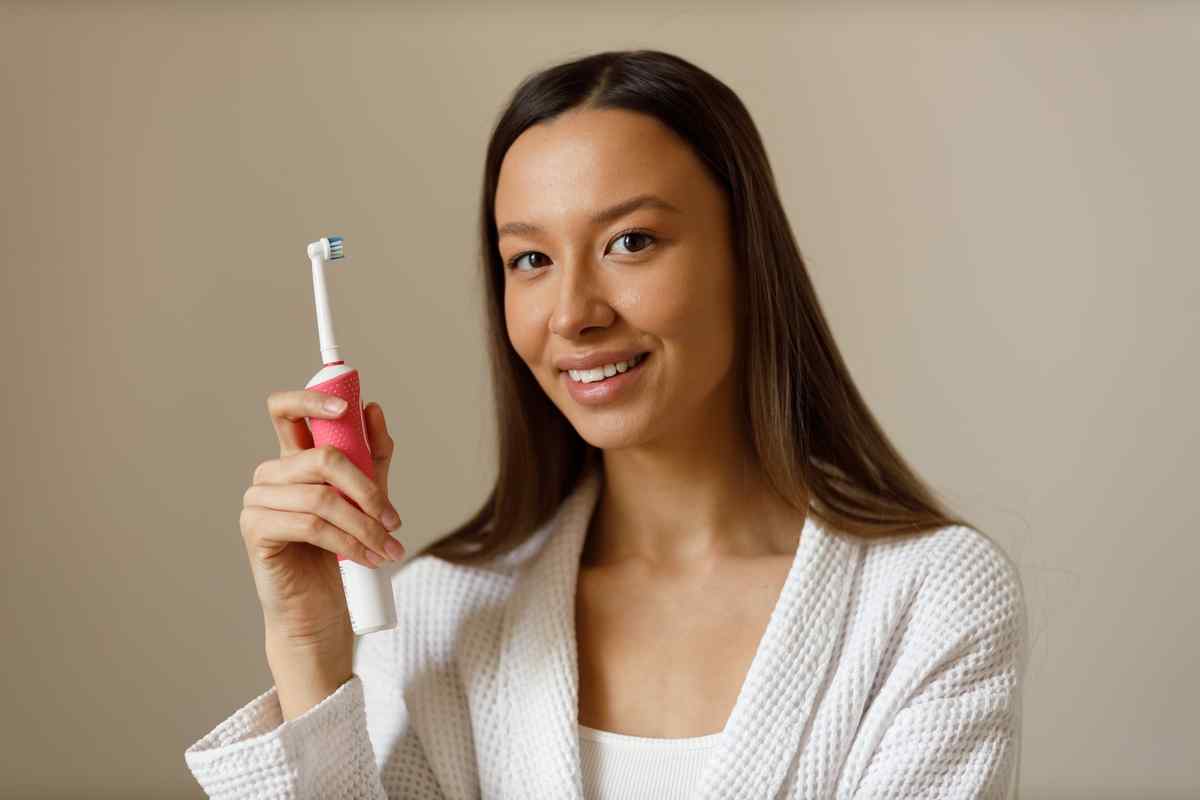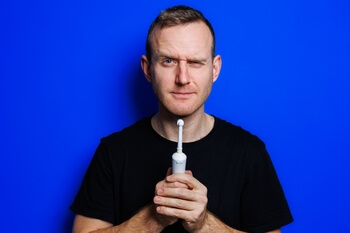Brushing and flossing regularly is essential in maintaining healthy teeth, yet even with this diligence, tartar can still form. To combat this issue, using a rechargeable electric toothbrush is an ideal solution. Electric brushes provide both vibration and rotation to reach hard-to-clean areas of the mouth while easily eliminating plaque before it turns into tartar. Let’s examine how incorporating an electric toothbrush into your dental hygiene routine and using it effectively will not only make practising good oral health quicker but also easier for you!
Understanding the relationship between plaque and oral health
Your oral cavity is full of microbes that can be kept in check with proper brushing and flossing. When you don’t properly brush or neglect to floss, it presents the bacteria an opportunity to multiply quickly, resulting in a thin film called plaque covering your teeth. If not removed immediately, plaque will accumulate over time and eventually harden into something referred to as tartar or calculus, which can cause severe damage if left untreated.
Ignoring the buildup of tartar can have disastrous results on your dental health. Not only does it increase your chances of developing cavities and gum disease, but it attracts more bacteria which in turn erodes away tooth enamel. If left unchecked, this infection may even travel beneath the gum line and start to affect soft tissues – putting you at high risk for gum disease. Protect yourself from these unpleasant repercussions by making sure to get regular check-ups with your dentist!
Attending to your oral hygiene is of the utmost importance, as tooth decay remains the major source of teeth loss. Additionally, it has been proven that dental health and overall well-being are correlated; those with gum disease are more predisposed to developing heart ailments, diabetes, or other medical issues.
Why use an electric toothbrush?
Offers a timed dental clean-up
The time and effort spent brushing your teeth will determine the degree of cleanliness in your mouth. Neglect or haste can have serious consequences for dental health, but an electric toothbrush is able to make up for those times you’re not completely dedicated to oral hygiene care.
Easy to manage for people with mobility limitations
For those who struggle with using a manual toothbrush, an electric toothbrush can be a game changer. Patients dealing with arthritis or carpal tunnel syndrome no longer have to worry about not being able to properly clean their teeth due to limited hand mobility – thanks to the assistance of an electric variety! Not only does it make dental hygiene more manageable for these individuals, but also far more comfortable as well.
Makes brushing fun for kids
Helping toddlers and young children learn the importance of dental hygiene can be a daunting task, but there is an interesting way to make it fun: introduce them to electric toothbrushes!
With these products, parents won’t have to worry if their little ones are brushing properly -plus, many of them come in vibrant colours or even light up or play music. It’s a perfect opportunity for kids not only to keep their teeth clean and healthy but also to enjoy the experience with colourful designs that will capture their attention.
Electric toothbrushes with built-in timers also make parents’ lives easier by ensuring children brush for the recommended amount of time without sacrificing quality family time.
Parents can feel confident their kids have properly cleaned their teeth and relax more fully at the moment.
A gum-friendly dental cleaning device
If your brushing technique has room for improvement and you are putting too much strain on your gums, the bristles of your brush may begin to weaken every three months. Over-brushing leads to a potential risk of gum recession – something which can go unnoticed by manual toothbrush users if they don’t pay attention.
An electric toothbrush will alert you when it senses too much pressure with a red light so that you never have to worry about harming your gums.
Remember, it’s not just about the power of your brushing – technique matters too! Frequently, people don’t brush methodically around their mouths. When scrubbing, start at one side and thoroughly clean each tooth before moving on to the next one in order until you reach the other end of your jaw. For a successful cleaning routine, remember to cover all bite surfaces and floss every single tooth completely–you’ll thank yourself later with improved oral hygiene!
Avoid using harsh toothpaste when brushing your teeth, specifically with an electric brush, as it can have damaging effects on both your gums and enamel.
Provides cleanliness to the tongue
Not only can your electric toothbrush clean and polish your teeth, but it’s also a great way to keep the bacteria on your tongue at bay. Since microbes responsible for foul breath and plaque formation may inhabit the surface of your tongue, using an antiseptic mouthwash in conjunction with brushing will eliminate these pesky germs from more than just your pearly whites!
How to use an electric toothbrush properly?
Electric toothbrushes are designed to make sure you brush your teeth for the right amount of time. Many models come with a two-minute timer, and some even beep every 30 seconds so that you know when it’s time to switch sections. Divide your mouth into four quadrants: front teeth, back teeth, chewing surfaces and behind molars, as well as tongue and roof of the mouth for complete brushing coverage.
Stepwise guide to using an electric toothbrush
Step 1 – Before you start brushing your teeth, it’s essential to first ensure that your electric toothbrush is adequately charged. Most models come with a charge indicator light, so you know when the brush is ready for use. Flossing before brushing help remove any plaque or food particles stuck between your teeth, making it easier and more efficient for the toothbrush to take care of them quickly and effectively.
Step 2 –Hold the brush at a 45-degree angle as you would with a manual toothbrush. Start on the outside surfaces of your teeth and guide the brush head slowly from each individual tooth, pausing for several seconds before moving on to the next one. Make sure to follow along with both the shape of each individual tooth and also ensure that you pay attention to any curves or contours around your gums.

Step 4 – After you have brushed your teeth, take a few moments to delicately brush the gum line and gums with the toothbrush head. This will help clear any lingering plaque particles. Be cautious not to apply too much pressure while brushing your gums, or else it could cause soreness.
Step 5 – Finally, delicately brush your tongue and the roof of your mouth to get rid of any remaining food particles. This will help give you fresher breath in no time!
Establishing an effective dental hygiene regimen is essential, and electric toothbrushes make it easier to remove plaque and particles while combating gingivitis and other gum diseases. Brushing your teeth with an electric toothbrush guarantees that you are properly removing all debris each time—keeping your mouth in good condition!
How to take care of your electric toothbrush?
To keep your electric toothbrush in pristine condition, first, unplug it and wipe the base with a cloth or paper towel soaked in a mild cleansing solution. Then use a cotton swab dipped into the same cleaner to scrub away any dirt around where the head attaches. Every few days, rinse both parts of your brush off with warm running water to get rid of germs and excess toothpaste build-up. Lastly, replace the electric toothbrush head every 3-4 months or when you start noticing fraying bristles for maximum hygiene efficiency.
To get the most battery life out of your electric toothbrush, you need to take proper care of its power source. While precise guidelines may vary between brands, it is generally best practice to let the handle fully charge and then use it until all power is gone before recharging again. This process should be repeated instead of charging after each individual session for optimum results. Different instructions from different manufacturers exist; however, following this policy will typically extend your battery’s lifespan to its full capacity.
Visit Infinity Dental Care for your regular dental check-up and professional cleaning & polish. Give us a call at (02) 9159 6237 to schedule an appointment now, and don’t forget to ask about the advantages of investing in an electric toothbrush! We eagerly await hearing from you soon!
References
Electric toothbrushes: Are they worth it?
https://www.webmd.com/oral-health/features/electric-toothbrushes
Electric toothbrushes
https://www.dentalhealth.org/news/electric-toothbrushes-win-the-head-to-head-against-manual-in-record-breaking-new-study


